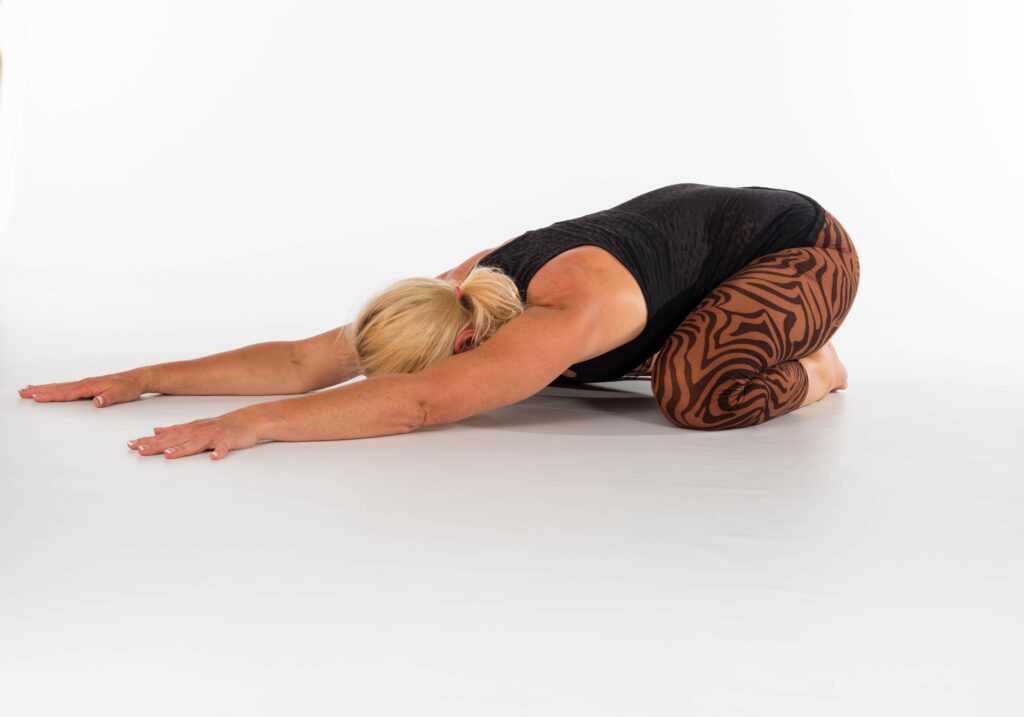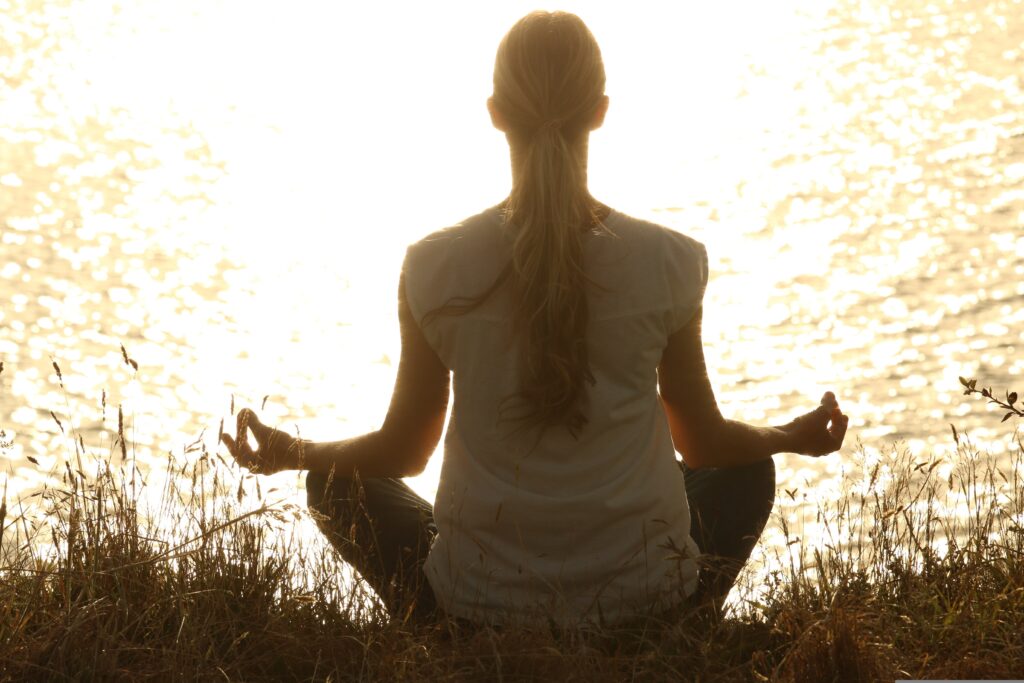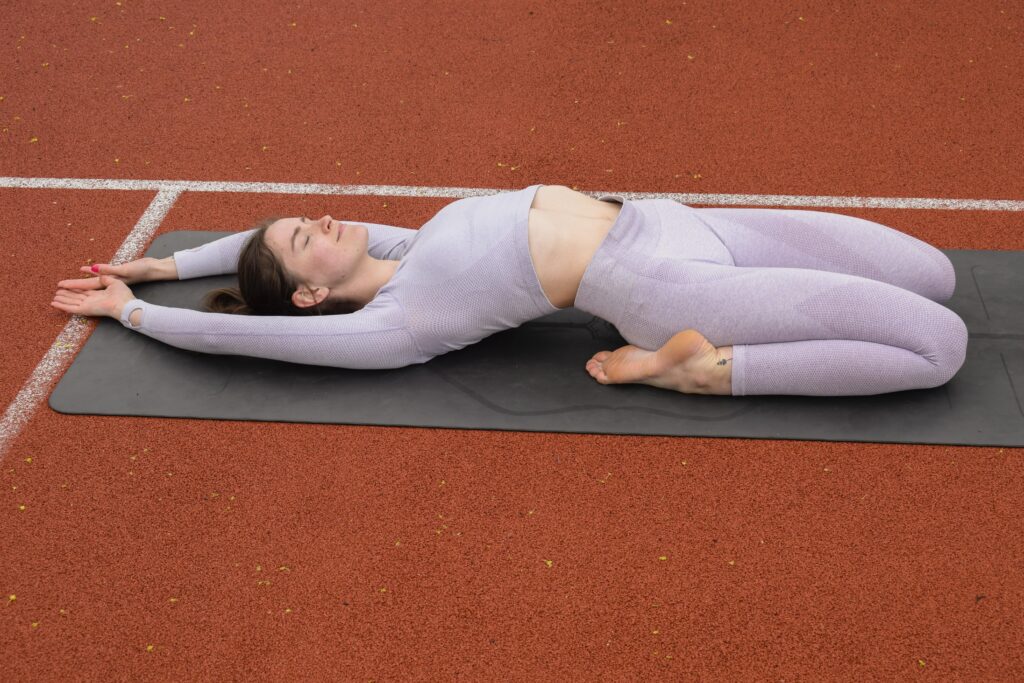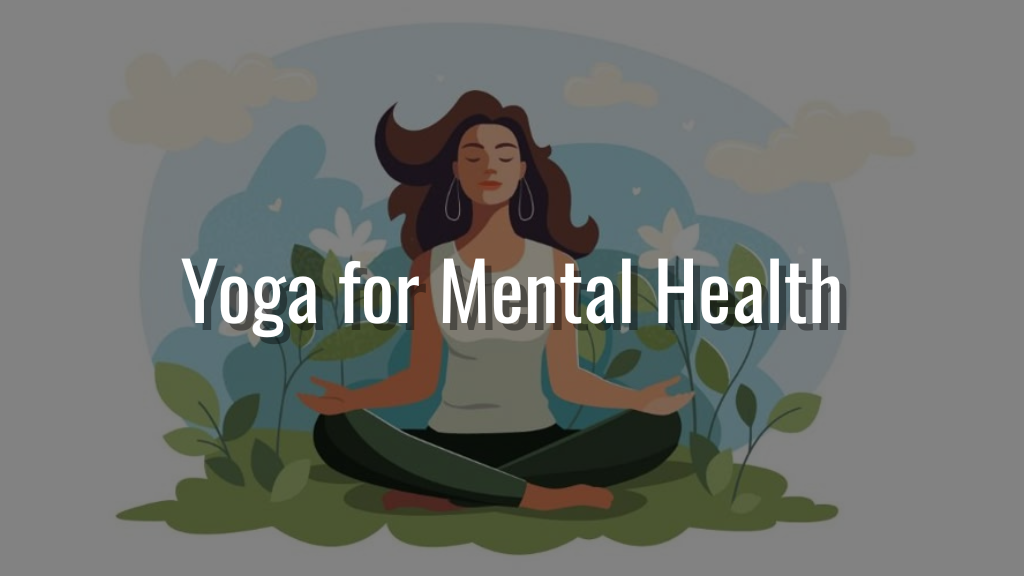Yoga for Mental Health: How yoga asanas improve mental health, what yoga for mental health, how does yoga for mental health relieve stress, anxiety, and depression, what are the benefits of yoga for mental health, and how can we do them at home?
Table of Contents
In today’s time, many mental problems like stress, anxiety, and depression are arising in the fast-paced and busy lifestyle, which affects all of us. In such a time, yoga for mental health is an ancient Indian tradition that works to calm and balance the mind and soul. Yoga for mental health is proving to be an effective and natural remedy. Yoga for mental health not only improves mental health but also provides self-awareness, positive thinking, and emotional stability. Yoga is not just a physical exercise, but it establishes a balance between mi, nd and soul. The lifestyle related to yoga for physical and mental health has been supported and developed by Indian sages and acharyas since the Vedic period or ancient times. It is not just a set of physical activities but a process of mental, spiritual, and emotional balance. The word ‘yoga’ is made Sanskrit wordhe metal ‘yuj’, which means ‘to join’. It means the union of the soul and God. In this method, our wishes, desires, thoughts, physical activities, food habits, and behavior, etc., are all included. In the trend going on in the name of yoga these days, people consider only physical exercise as yoga. Therefore, in the effort to make our whole life successful and happy, we do not get as much success as we should. Therefore, yoga has become an extremely important and integral part of a healthy life for all of us. Through yoga, we can make our lives healthy, successful, and joyful.
In human life, mental health is as important as physical health. In today’s time, problems like stress, anxiety, depression, and mental imbalance are becoming common. Mental problems not only affect our thinking, emotions, and relationships, but also make the body sick. Some yoga asanas for mental health play an important role in improving our mental health, including. These asanas calm our minds, reduce stress, and help in increasing concentration and rationality. Along with this, regular practice of yoga improves the quality of sleep and spreads positivity in the mind. The main yoga asanas for mental health, which are helpful in strengthening mental health, include breathing, controlled pranayama methods, meditation exercises, and specific relaxation asanas.
Yoga for mental health: Effective and infallible asanas-
Effective yoga for mental health is given below, which is considered helpful in improving mental health.
1. Balasana-

Balasana is a relaxing pose of yoga for mental health in which a person sits on their knees, bends forward, stretches their hands forward, and places their forehead on the ground. It helps reduce stress and relieves stiffness in the back and shoulders.
Method-
First of all, sit in Vajrasana (on your knees), bend your body forward, touch your forehead to the ground, and place both your hands in front of your palms on the ground. Close your eyes and take a deep breath. Sit in this posture for 5 minutes.
Benefits-
This yoga asana gives peace to the brain, removes anxiety and fatigue, and calms the mind. This yoga asana is considered an important asana for mental health.
2. Meditation in Sukhasana-

Sukhasana is an easy and easy yoga pose, which can be done easily by anyone. In this, the person sits cross-legged on the ground, keeps the waist straight, and the hands on the knees. This posture is suitable for meditation,n, and the practice of peace. It provides physical and mental peace and increases self-awareness.
Method-
In this asana, sit cross-legged on the ground in a calm, clean, and airy place, with both legs folded. Straighten the waist and take a deep breath. And in Gyan Mudra or Chin Mudra, close your eyes and relax your body completely. Take deep breaths and exhale slowly. Observe your breath and thoughts. Chant the word ‘Om’ if you want. Do it for 5–10 minutes in the beginning. Gradually, you can increase it to 20–30 minutes.
Benefits-
This yoga asana brings mental peace, clarity, and stability. Mental stress is reduced, the power to concentrate increases, and negative thoughts are relieved and concentration increases.
3. Bhramari Pranayama –

Bhramari Pranayama is a powerful breathing technique that helps calm the mind, reduce,e stress, and increase mental clarity. It is named ‘B,hramari’, meaning ‘Bhramara (bum,blebee)’ because a buzzing sound like that of a bumblebee is produced while exhaling. Bhramari Pranayama is an effective form of yoga for mental health.
Method-
In Bhramari Pranayama, first of all, sit in Padmasana, Sukhasana, or Vajrasana, close your eyes, and breathe normally for some time. After that, sit in the posture of your hands, i.e., Shanmukhi Mudra, in which place the index fingers of both your hands on the holes of the ears. If you want, close your eyes with the rest of your fingers. As if – separating your mind from the outside world. Now slowly take a deep breath through the nose and while exhaling, keep your mouth closed and while exhaling slowly from the nose, make a bee-like buzzing sound “hmmm…”. This sound should resonate inside the throat or head for a long time. The vibration of this sound calms the brain. Repeat it 8-10 times.
Benefits-
This yoga pose is beneficial in relieving stress, anger, anxiety, and high blood pressure, improving sleep, and reducing insomnia. It cools the brain and increases concentration, relieves headaches and migraines, and benefits thyroid and throat-related problems.
Precautions-
1- Do not exert force while exhaling.
2- If there is an infection in the ears, do not do this pranayama.
Special suggestion-
If you do Bhramari Pranayama before sleeping at night, it improves mental peace and sleep quality.
Method-
Close your eyes and take a deep breath. Thereafter, if you exhale and make the sound of ‘M…’ (sound like a bee) with your ears closed, the effect is greater.
Benefits-
1-The nervous system calms down.
2-Anger and nervousness are reduced.
4. Pranayama: Anulom-Vilom –

This yoga asana (pranayama) is a very effective breathing yoga technique that helps balance the body, mind, and soul. It is also called Nadi Shodhana Pranayama because it purifies the energy-carrying nerves of the body. This process of Anulom-Vilom of Pranayama is also an important and effective part of yoga for mental health.
Method-
In this asana, sit cross-legged on the ground in a calm, clean, and airy place, with both legs folded. Straighten the waist and take a deep breath. And close the eyes in Gyan Mudra and leave the body completely loose. Slowly inhale deeply and exhale. Now fold the thumb and ring finger of the right hand. Close your nostrils alternately with these two fingers (close the right nostril with the right thumb and the left nostril with the ring finger). Now take a deep breath from the left nostril, exhale from the right nostril, then inhale from the right nostril, and exhale from the left. This is called ‘one cycle’. Now do it for 5–10 minutes in the beginning. Gradually, it can be increased to 20–30 minutes. Breathe and exhale slowly, deeply, and without sound. Do not apply any kind of force.
Benefits-
This asana helps in the purification of the nerves, supply of oxygen to the brain, mental pethe ace, blood pressure control, the reduction in stress, increase in concentration and memory, and improvement in lung function. Both parts of the body (Ida and Pingala) remain balanced.
5. Pada-Hastasan-

Pad-Hastasana is a yoga posture that makes the body flexible and improves digestion. It is called “pada” in Sanskrit, meaning “foot” and “hasta” meaning “than,d”, i.e., “pose of holding feet with hands”.
Method-
While exhaling slowly, bend the upper part of the waist together (as shown in the picture) and touch the ground near the feet with both your hands. Try to touch your head between your knees as much as possible. But keep in mind that the knees should not bend. Do as much as you can comfortably. The situation becomes normal with regularity.
Benefits-
It removes Vayu. The situation, Pingala, etc., nerves become strong, supply oxygen to the brain, mental peace, blood pressure control, stress reduction, increase in concentration and memoryand power, improvement in lung function. All the dothe shas of the stomach and abdomen get removed and destroyed.
6. Setubandhasana-

In this asana, the body becomes in the shape of a bridge, hence it is called Setubandhasana or Bridge Pose. This is a very beneficial yoga asana for the back, which strengthens the spine, chest, and thighs.
Method-
In this asana, first of all, lie down in Shavasana (on the back). Keep the hands straight and the palms facing the ground. Bend both your knees and keep your feet on the ground. Both legs should be parallel to the hips, and the heels should be close to the buttocks. Taking the support of the palms, slowly raise the hips until the body comes in the shape of a bridge from the neck to the knees. Leave the hands spread on the ground, or if you want, join the hands under the back and press them into the ground. Stay in this position according to your ability. Keep your attention on the breath and stomach. After that, slowly rest the waist back on the ground and relax in Shavasana.
Benefits-
This asana provides relief from stress, depression, and fatigue, increases flexibility and strength of the spine, active,ates the thyroid gland. Improves lungs and respiration. Activates the digestive system. Provides relief from menstrual pain in women.
Precautions-
Do not do this asana if you have severe back or neck pain. Consult a yoga therapist in case of high blood pressure, migraine. Pregnant women should do this asana only under the supervision of a trained yoga teacher.
7. Shavasana-

Shavasana is a pose of yoga for mental health. It is a very calm and relaxing pose. In this pose, the body is completely quiet and still, like a corpse. Also called the “dead corpse pose,” it is usually done at the end of a yoga practice to allow complete relaxation of the body and mind.
Method-
In this posture, first lie down straight on your back. Spread the legs a little and leave the toes loose outwards. Keep your hands a little away from the body and palms upwards, close your eyes and leave the body completely relaxed.
Let your breathing flow normally without any control. Gradually release the tension in the whole body from head to toe. Stay in this position for 10 to 15 minutes.
Benefits-
This asana relieves mental stress and anxiety, controls blood pressure, increases attention and concentration, relieves fatigue and regains energy and gives complete relaxation to the body.
Yoga for mental health: Benefits-
The main benefits of yoga for mental health are as follows.
1. Relief from stress and anxiety-
Various yoga postures, such as asanas, meditation, and pranayama, reduce stress and anxiety and calm the brain, thereby reducing cortisol (stress hormone) levels.
2. Improvement in will and emotional stability-
The secretion of ‘happy hormones’ such as serotonin and oxytocin is stimulated by yoga, which improves mood and provides relief from mental problems like depression.
3. Increase in concentration and memory-
By practicing yoga and meditation, brain efficiency increases. It activates the prefrontal cortex of the brain, which improves concentration, decision-making ability, and memory.
4. Self-acceptance and self-awareness-
The ability to self-observe increases, which helps a person understand their feelings, thoughts, and behaviors better. This increases self-esteem and self-confidence.
5. Improvement in sleep quality-
Yogasana (Yoga Nidra) has been proven to be useful in curing insomnia and other sleep-related problems. It strengthens both the body and the mind.
6. Improvement in mental disorders-
In mental disorders like depression, post-traumatic stress disorder, and obsessive-compulsive disorder, yoga therapy is emerging as a supportive treatment option.
Yoga for mental health: precautions while practicing-
The main precautions while practicing yoga for mental health are as follows.
1. Yoga for mental health should be practiced according to tolerance. So start practicing yoga slowly, do not force it.
2. Yoga for mental health should be practiced in a calm and clean environment.
3. The effect of yoga on mental health is visible only when you do it continuously. So maintain regularity.
4. Pregnant women and mentally ill people should do it after consulting a doctor.
Online resources related to yoga for mental health-
Nowadays, many online platforms provide instructions regarding yoga and exercise for mental health. For example, with the help of vijaybooks.store, you can practice yoga and exercise at home.
There is another blog written in English similar to this blog.
yoga.ayush.gov.in is a government website of India.
Conclusion-
Practicing yoga for mental health is very important for any person. Yoga not only strengthens the body, but also stabilizes and balances the mind (mental health). By doing yoga, meditation, and meditation for mental health regularly, a person becomes stress-free, ee, and full of confidence.
There is a deep connection between yoga and mental health, which is scientifically proven. Regular yoga practice not only reduces mental stress but also provides mental empowerment and emotional stability. In the modern lifestyle, yoga for mental health is an effective and accessible means that can be easily done at home.
If you are feeling mental unrest, anxiety, or stress, then adopting yoga for mental health is a simple, le, and effective solution. In the hustle and bustle of life, 30 minutes of yoga can give a new lease of life to your mental health.


1 thought on “Yoga for Mental Health”